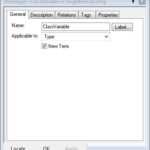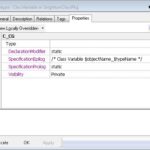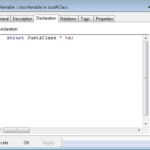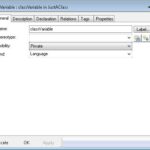I always use to say: Rhapsody is a program for real men.
Not that it is unsuitable for women… far from that. I’m jokingly trying to make clear that Rhapsody leaves a lot to the users attention.
Unlike most Windows versions Rhapsody will never warn you when an action can have consequences that might hurt. Hence the “real men”. Apparently they don’t cry in these situations. Unless they have the flu but that’s a different story.
Rhapsody comes in various flavours, C/C++/Java/ADA (C# was discontinued a while ago) and also some SysML and UML Versions. However, there is only one rhapsody.exe on your hard-drive (unless you have multiple versions installed, yeah, yeah)
The command line or rhapsody.ini combined with your license file determines which version is started. Rhapsody says in the menu bar which version you just started, this is where you should pay attention to prevent a lot of work afterwards.
Language
You can open a Rhapsody in ‘C’ model in Rhapsody in ‘C++’, in fact it will still be a Rhapsody in ‘C’ model and ‘C’ will be generated. The “last opened model” list will show you the last opened models regardless of the language. The trouble is when you inadvertently start with a ‘C++’ model and wanted a ‘C’ model. You can repair that but there will always be remains of the original language.
Rhapsody “Version”
I don’t mean 7.4 or 8.0. I mean Architect or Developer. Starting the wrong Rhapsody is not so bad, you will notice when you start using options that are not supported. The models are the same, Rhapsody cannot determine with which version they were made. So you’re OK there.
Version
Now i talk about 7.x or 8.x. That is different. Opening a “new” model with an older version of Rhapsody will not work, you get an error message. Opening an old model with a new Rhapsody works. Unfortunately…. no warning is issued, even not when you press save!
You notice the problem once you try to open the saved model with an older version of Rhapsody again…. no luck…
You can see that your model was older than the Rhapsody version, your model browser will show a “settings” folder that contains entries named CGCompatibilityPreXY. This indicates the model was made in an older version of Rhapsody.
I saved in a new version… what now…
Since 7.4 Rhapsody knows a “Save As” (One ’s’…) where you can select an older version to save to. Looks nice but remember: only 2 versions back… Luckily some newer versions of Rhapsody do not use a different format for the models so you always can go back 4 versions. But going from 8.2 to 7.4 is a lengthy process and involves 6 different Rhapsody versions…. The success is also limited, most versions of Rhapsody complain when doing “save As” that “information will get lost” but no indication is given to what might get lost…
What to do with CGCompatibilityPreXY?
Get rid of them ASAP. How? Easy! Before opening the model with a newer Rhapsody, generate code with the older version. Store that and then open with the new Rhapsody. First generate code and compare. If nothing has changed: lucky you! If there are changes: check if they interfere with your software. If yes either try to find out yourself what you can do about it or ask us: support@willert.de. We will help you as good as possible.
Now click on one of the CGCompatibilityPreXY’s, open the properties, switch to “Locally overridden” and check if this property might influence your model and/or code. If you don’t know: generate code and compare. If you need one of the properties: set it in your own profile, if you don’t need it: dump it. Go on until all properties are accounted for and then delete the CGCompatibilityPreXY file. repeat that for all files until you are done. Beware that there are properties in the CGCompatibilityPreXY files that are only for compatibility reasons. They will not appear in the standard property files! The only way to add them is to add them in the site.prp (or siteC.prp file) (I don’t like that as well but there is no other way)
Crash…
Rhapsody is a very stable program. The latest versions are suffering from some instability however. This is not al to blame on IBM. Most of the problems are caused by Microsoft and IT departments that treat software developers as all the other windows users in the company. Windows policies, lack of rights, incompetent system administrators, a deadly combination. As already said in <<>> link, installing is something to consider carefully.
But… what to do after a crash… or better before a crash. By default Rhapsody makes autosaves, every 10 minutes. So when a crash happened and you start Rhapsody again it will ask you (when opening the crashed model again) “Autosave exists, load autosave?” Be careful what you answer here… it is a one-time answer…. The one you choose will be selected, the other deleted. As I said before… Rhapsody is a program for real man. If in doubt: make a copy first. Or better: use config management.
There is General::Model::AutoSaveInterval, set that to a lower value to increase the saves.General::Model::BackUps can be set to One or Two to make backups of your model when you save. General::Model::SaveBeforeCodeGeneration can be set to TRUE so that code generation automatically saves your model.
Happy Modeling with Rapsody!
Walter van der Heiden (wvdheiden@willert.de)








